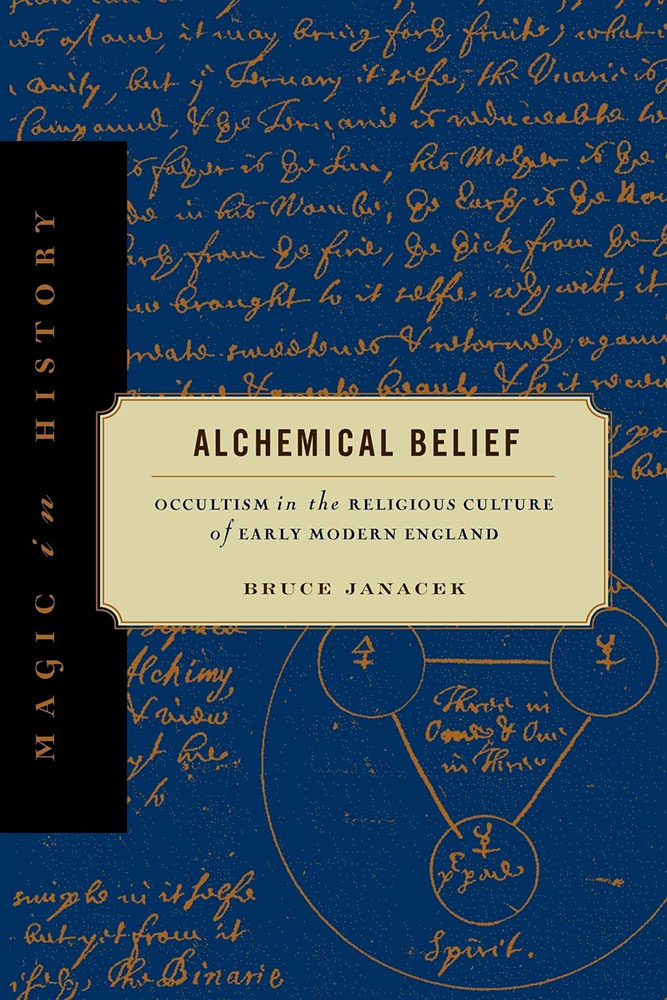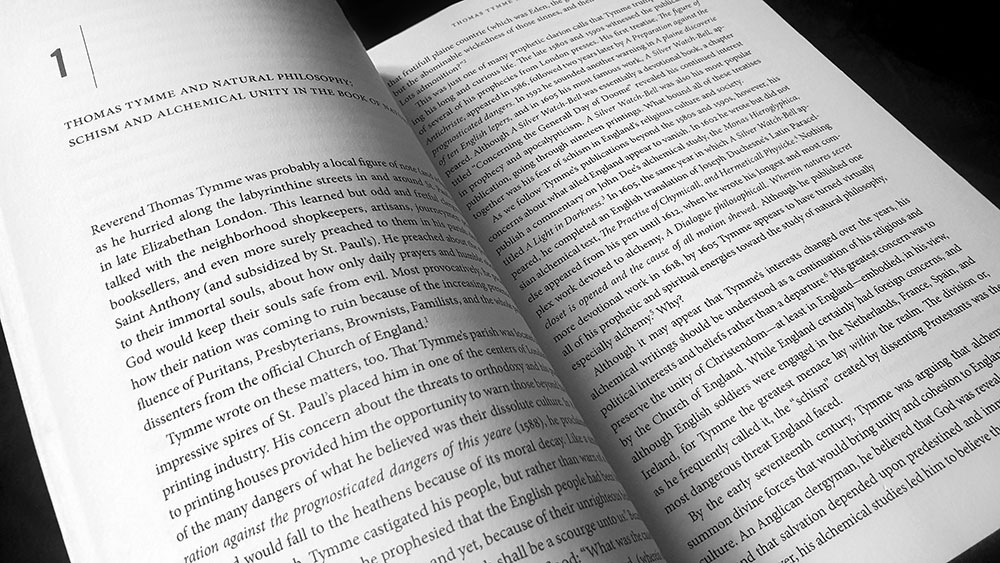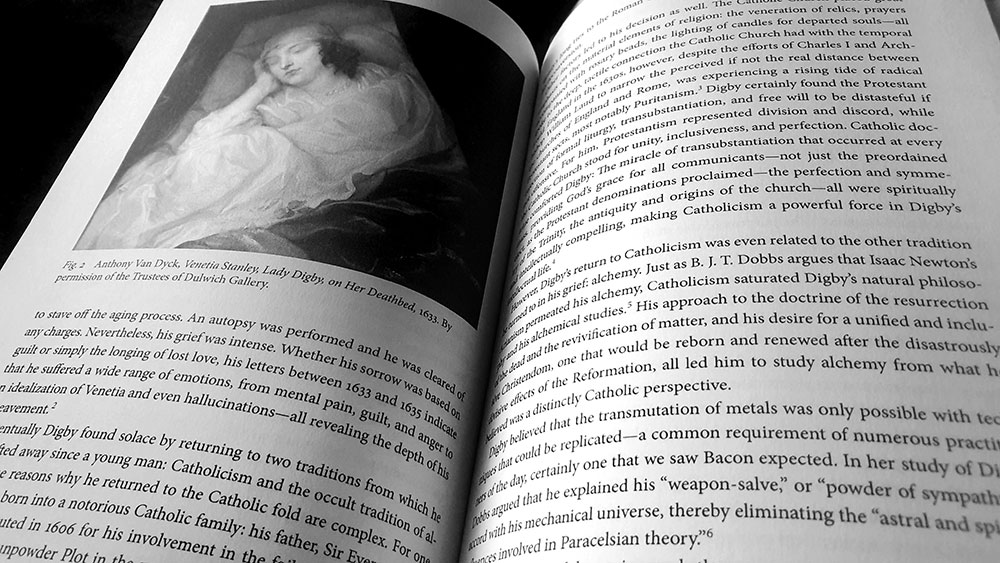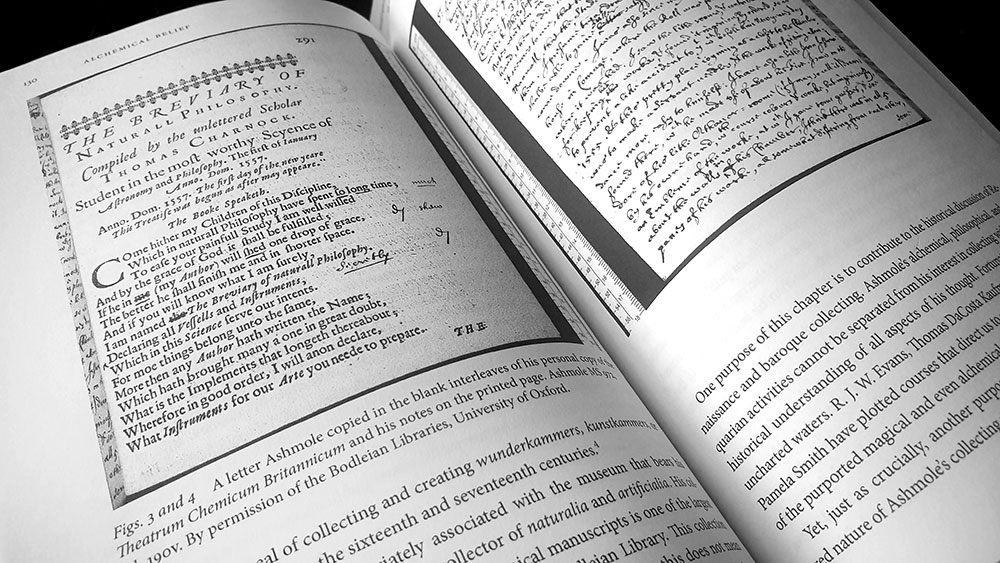 In this unique title, Bruce Janacek explores alchemy in early modern England, but not from a scientific or even necessarily occult perspective. Instead, this is a consideration of how the art was contextualised within the lives, beliefs and philosophies of otherwise religious men for whom an interest in esoteric matters might seem incongruous. In so doing, Janacek shows how the aspirational and hopeful principles that underlie alchemy provided a language and methodology for restoring order, in either a political or religious context, to what was perceived as a disordered world. Janacek divides his books into five chapters, each focusing on one of the major examples of this intersection betwixt religion and alchemy: Thomas Tymme, Robert Fludd, Francis Bacon, Sir Kenelm Digby, and Elias Ashmole.
In this unique title, Bruce Janacek explores alchemy in early modern England, but not from a scientific or even necessarily occult perspective. Instead, this is a consideration of how the art was contextualised within the lives, beliefs and philosophies of otherwise religious men for whom an interest in esoteric matters might seem incongruous. In so doing, Janacek shows how the aspirational and hopeful principles that underlie alchemy provided a language and methodology for restoring order, in either a political or religious context, to what was perceived as a disordered world. Janacek divides his books into five chapters, each focusing on one of the major examples of this intersection betwixt religion and alchemy: Thomas Tymme, Robert Fludd, Francis Bacon, Sir Kenelm Digby, and Elias Ashmole.
The first of these men, Thomas Tymme, was a sixteenth-century minister, making him perhaps the most unlikely of advocates for an occult science such as alchemy. Janacek shows how Tymme’s primary concerns was the schisms within Christendom, specifically in post-Reformation England which had seen the emergence of Protestant dissenter groups who separated themselves from the Church of England, including Brownists, Puritans, Familists and Presbyterians and others. For Tymme, such factions were leading England to ruin, and constituted an enemy within that was far more dangerous than any foreign power. Such ecumenical concerns dominated Tymme’s initial run of publications, which Janacek documents fully, but following a largely silent decade between 1592 and 1602, Tymme turned somewhat unexpectedly to alchemy, publishing three treatises over the course of the following decade. He began with A Light in Darkness, a commentary on John Dee’s Monas Hieroglyphica, in which he traced the origin of esoteric tradition to the Postlapsarian world and gave Tubalcain a prominent role as an antediluvian alchemical figure, referring to him as “that Vulcanical Abram Tubalcain the astrologian and great arithmetitian.” As with this retelling of biblical history, the two periods of Tymme’s writing have a through line in the theme of spiritual harmony, with Tymme seeing the unity that he sought within Christendom as an emulation of divine oneness, a state that was, for him, illustrated by alchemical processes. Essentially, the universe was a divinely-ordered place and alchemy revealed its order.
Robert Fludd seems a more obvious alchemical fit given his proximity to similar subjects as a Paracelsian physician and defender of Rosicrucianism. Like Tymme, Fludd’s promotion of alchemy was tied to a natural theology that saw nature in all its forms, including alchemy, music and mathematics, as a revelation of God’s presence: nature was essentially a testament to God’s hand that could be read as easily as inerrant scripture. Fludd also shared Tymme’s concerns with unity, though rather than the ecclesiastical irenicism that would have brought Christendom together, he sought one that removed the boundaries between philosophical systems, integrating religious, philosophical and occult traditions. It is Frudd’s natural theology and its relationship to alchemy that Janacek focuses on here, particularly in contrast to the tutor and author, Patrick Scot, who, though accepting of alchemy as allegory, found it anathema to see it and any efficacy as a sign of God’s hand. Janacek illustrates this divide by analysing Scot’s refutation of alchemy, The Tillage of Light, and Fludd’s unpublished response to it, Truth’s Golden Harrow, showing how the difference of opinion between the two men reflected wider philosophical divides, in particular the orthodox distrust of the emerging spirit of Pyrrhonic scepticism. This highlights one of the joys of Janacek’s writing here, how he effortlessly contextualises everything within the mores and shifting beliefs of the time, whether it is alchemy’s relationship to scepticism, or in another instance, how Fludd’s coadunative motivations embraced and aligned with Cabalism’s search for divine union.
Interestingly, of the five figures discussed in this work it is Francis Bacon who emerges as the most unlikely of alchemists, more so than even the Reverend Tymme, with Janacek focussing for most of his chapter on the father of empiricism’s published distain for the art. Bacon was withering in his treatment of alchemists, diagnosing them as being infected by their imagination, and calling Paracelsus, in the sickest of burns, the ‘adopted son of the family of asses’ and someone whose writings were the mere braying of a person possessed of a conspicuously braggart air. But Janacek attributes much of this invective to Bacon’s practiced dissimulation, an essential skill as a courtier for both Elizabeth I and James I, where one’s longevity could be assured through the judicious allegiances and the circumspect giving and withholding of advice or opinions. Drawing on Paolo Rossi’s ground-breaking 1957 rehabilitation of Bacon’s association with magic, Janacek shows how Bacon’s core ideas, as expressed in his Novum Organum, such as the spiritual quality of matter and its potential for mutability, were shared with alchemists.
Amongst the esteemed Protestants considered by Janacek is a lone Catholic, the courtier, diplomat and natural philosopher Sir Kenelm Digby. Like his contemporaries, Digby shared a concern with religious harmony, although for him, this was to be found in Catholicism, which, as embodied in the miracle of transubstantiation, stood for unity, inclusiveness and perfection; unlike the division and discord of Protestantism. For Digby, the miraculous process of transubstantiation was mirrored in alchemy and Janacek shows how this facilitated a vision of alchemy that tacked closely to Catholicism, with, in one instance, a particular emphasis on the theme of resurrection as an analogue of alchemical process. Digby’s last alchemical text, the posthumously-published Chymical Secrets, stands as a testament to this amalgam of religion and occult science, with a preface that acts as an apologetic for both alchemy and Catholicism, arguing that the Catholic doctrine of free will was a crucial element in the alchemical process. In this process Digby found a manifestation of the Trinity, with the stages and materials in the act of transmutation marking out the Creator (“Soul”), the Incarnation (“Body”) and the Holy Spirit (“Spirit”).
Janacek’s concluding chapter concerns the antiquary and politician Elias Ashmole who is justifiably immortalised in the University of Oxford museum that bears his name, a site that is the fullest realisation of his life-long collecting of naturalia, artificialia, as well as heraldic, astrological and alchemical manuscripts. Janacek shows how Ashmole’s dedicated pursuit and publication of alchemical manuscripts aligned with the hopes for unity that underscored the philosophies and goals of his predecessors Tymme, Fludd, Bacon, and Digby. Ashmole identified himself as a priestly figure and envisioned his collecting and publishing of knowledge as sacred work, something which Janacek shows was not an uncommon practice at the time, with similar acts of agglomeration being visualised as vehicles for Edenic renewal. Ashmole’s publication of Theatrum Chemicum Britannicum is exemplary of this motivation and his belief that alchemy was key to acquiring prelapsarian wisdom and freeing humanity from the corruption wrought by the Fall of man. By compiling, as it did, alchemical texts by Thomas Norton, George Ripley, Geoffrey Chaucer, John Gower, John Lydgate, John Dastin, Abraham Andrews, William Backhouse and various anonymous authors, this British chemical theatre could essentially be seen as a devotional work, a testament to alchemy’s transformative potential.
Alchemical Belief runs to a mere 164 pages, followed by a significant wad of endnotes and references, but it by no means feels short, with the small point size cramming a significant word count into each page, and illustrations being kept to a minimum. In addition, Janacek has a writing style that if not dense could be considered comprehensive, often straying from the respective main subject into broader but relevant areas. This never feels egregious, and indeed it is always in the service of providing valuable context. For example, a discussion of Ashmole’s interest in botany and gardening (simultaneous with his exploration of alchemy) evolves into a larger discussion of how the use of collecting as an aide to Edenic renewal extended to formal gardens. A garden that incorporated numerology, cabalism or biblical symbolism into its design extended such a locus from its purely botanical function to one that created a new vision of the relationship between humanity and nature. As a result, the reader expecting a book simply about alchemy may find themselves knowing significantly more about the broader concerns of early modern England, both mundane and esoteric. Janacek ultimately succeeds in his brief, showing how alchemy was not, as one could superficially view it, a mere occult science (or pseudoscience), but was instead something that intelligent men could integrate into their religious world view, often with little effort or regret.
Published by the Pennsylvania State University Press



